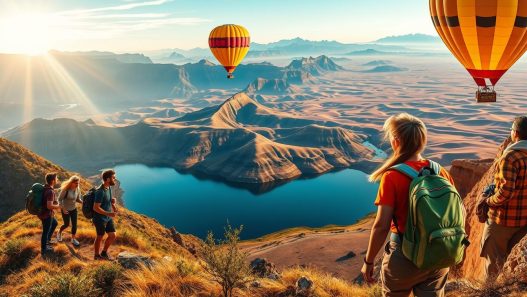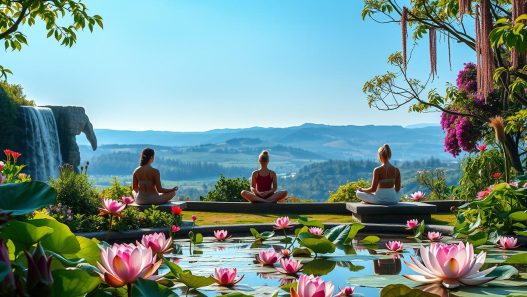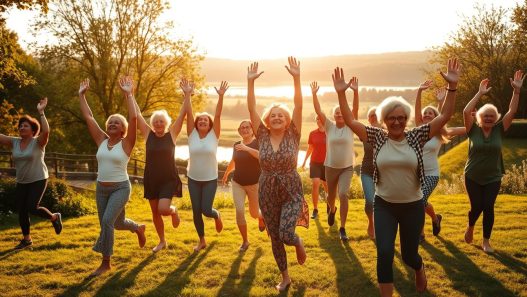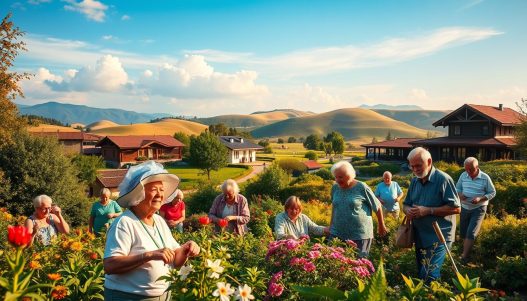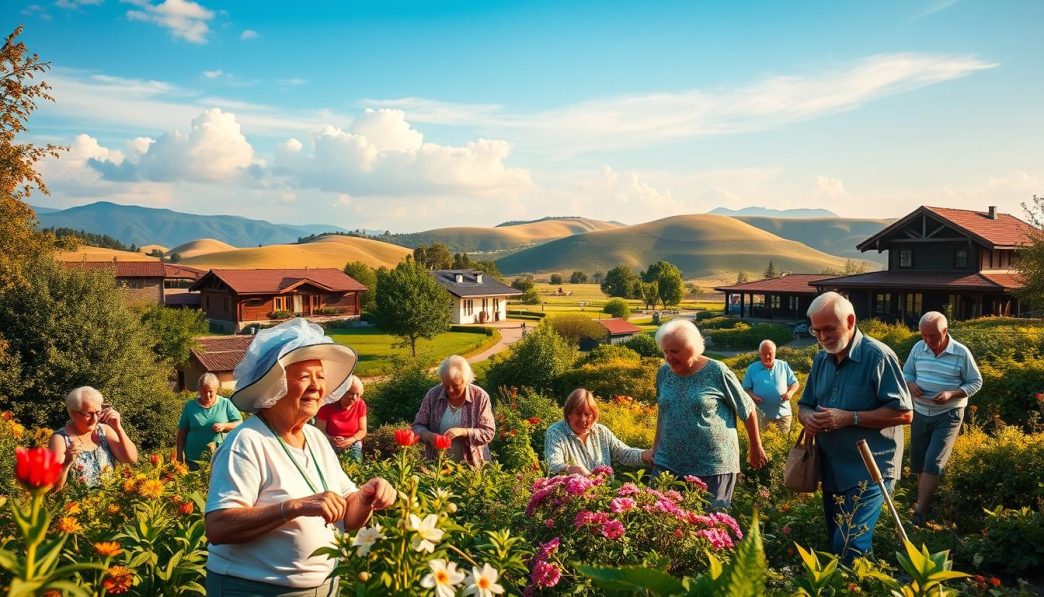Discover the secrets to a longer, healthier life by exploring the world’s Blue Zones, areas where people live significantly longer and healthier than anywhere else.
These healthy cultures have much to teach us about longevity lessons. By examining their lifestyles and habits, we can uncover longevity secrets that can be applied to our own lives.
From diet and exercise to social connections and stress management, understanding the practices of these cultures can help us live more fulfilling lives.
Key Takeaways
- Discover the world’s Blue Zones and their secrets to longevity.
- Learn how diet and lifestyle contribute to a long and healthy life.
- Understand the importance of social connections in longevity.
- Explore stress management techniques used by healthy cultures.
- Apply longevity lessons to improve your own life.
The Global Phenomenon of Blue Zones
The concept of Blue Zones has revolutionized our understanding of longevity and health. Dan Buettner, a National Geographic Fellow, identified these areas around the world where people live significantly longer than average. But what makes these regions so special?
What Are Blue Zones?
Blue Zones are geographic areas where people live longer and healthier lives. These regions have a high percentage of centenarians and supercentenarians. The concept challenges the traditional view that longevity is primarily determined by genetics.
Common Characteristics of Longevity Hotspots
Despite their geographical differences, Blue Zones share common lifestyle characteristics that contribute to the longevity of their inhabitants. These include:
- A predominantly plant-based diet rich in fruits, vegetables, and whole grains.
- Regular physical activity that is often incorporated into daily life.
- Strong social connections and a sense of community.
- Low levels of stress through practices like meditation or napping.
The Science Behind Exceptional Lifespans
Research into Blue Zones has shown that it’s not just one factor that contributes to longevity, but a combination of diet, lifestyle, and environment. Studies have found that people in these areas have lower rates of chronic diseases such as heart disease and diabetes. The science behind Blue Zones is helping us understand how to live longer and healthier lives.
By examining the lifestyles and habits of people in Blue Zones, we can gain valuable insights into how to improve our own health and longevity.
Okinawa, Japan: The Island of Centenarians
With a high concentration of centenarians, Okinawa, Japan, has become a pivotal area of study in understanding the secrets to a long and healthy life. The Okinawan lifestyle, characterized by a unique diet, regular physical activity, and a strong sense of purpose, offers valuable lessons in longevity.
The Okinawan Diet and “Hara Hachi Bu”
The traditional Okinawan diet is rich in plant-based foods, seafood, and soy products, with a particular emphasis on sweet potatoes. A key aspect of this diet is the practice of “Hara Hachi Bu,” or eating until 80% full, which promotes calorie restriction and potentially contributes to the longevity of Okinawans.
Physical Activity Through Gardening and Daily Life
Okinawans naturally incorporate physical activity into their daily routines, often through gardening and other traditional practices. This consistent, low-intensity exercise contributes to their overall health and longevity.
The Role of “Ikigai”
The concept of “Ikigai,” or finding purpose in life, is deeply ingrained in Okinawan culture. Having a clear sense of direction and meaning can significantly impact mental and emotional well-being, potentially contributing to a longer life.
| Longevity Factor | Okinawan Practice | Benefit |
|---|---|---|
| Diet | Plant-based, seafood, sweet potatoes, Hara Hachi Bu | Calorie restriction, nutrient-rich |
| Physical Activity | Gardening, daily chores | Regular, low-intensity exercise |
| Purpose in Life | Ikigai | Mental and emotional well-being |
Sardinia, Italy: The Mediterranean Mountain Lifestyle
Nestled in the Mediterranean, Sardinia is a hotspot for longevity, with its unique lifestyle and diet playing crucial roles. The island’s rugged terrain and traditional way of life have significantly contributed to the Sardinians’ exceptional longevity.
The Sardinian Diet: Pecorino Cheese, Wine, and Plant Foods
The traditional Sardinian diet is rich in whole foods, including a variety of plant-based foods, whole grains, and dairy products like Pecorino cheese. Moderate consumption of red wine is also a common practice. Key components of the diet include:
- Whole grains
- Legumes and beans
- Fruits and vegetables
- Pecorino cheese, rich in omega-3 fatty acids
- Red wine in moderation
Natural Physical Activity Through Shepherding
Many Sardinians engage in shepherding and other forms of physical activity as part of their daily lives. This natural movement contributes to their overall health and longevity. The island’s terrain encourages walking and other physical activities, making exercise a natural part of daily routines.
Strong Family Bonds and Community Support
The Sardinian culture places a strong emphasis on family bonds and community support. Close-knit families and a sense of community are integral to the island’s social fabric, providing emotional support and reducing stress.
The combination of a healthy diet, regular physical activity, and strong social connections has made Sardinia a remarkable example of a Blue Zone. By understanding these factors, we can gain valuable insights into promoting longevity and well-being.
Ikaria, Greece: Where People “Forget to Die”
The island of Ikaria has been identified as one of the world’s Blue Zones, where residents live longer and healthier lives. Located in the Aegean Sea, Ikaria’s unique lifestyle and environmental factors contribute to the longevity of its inhabitants.
Nutritional Habits and Herbal Remedies
The Ikarian diet is rich in plant-based foods, including fruits, vegetables, whole grains, and legumes. Herbal teas are also a staple, with residents consuming them regularly for their health benefits. These dietary habits play a significant role in the overall health and longevity of Ikarians.
Rest and Relaxation
Afternoon naps are a common practice in Ikaria, contributing to stress reduction and overall well-being. This tradition allows residents to rest and recharge, promoting a healthy lifestyle.
Natural Environment and Lifestyle
Ikaria’s natural environment encourages an active lifestyle, with many residents engaging in farming and other physical activities. The island’s rugged terrain and beautiful landscapes also promote a sense of well-being and connection to nature.
| Longevity Factor | Description | Benefit |
|---|---|---|
| Ikarian Diet | Rich in plant-based foods and herbal teas | Promotes overall health and longevity |
| Afternoon Naps | Regular rest periods | Reduces stress and improves well-being |
| Natural Environment | Encourages physical activity and connection to nature | Promotes a healthy and active lifestyle |
Nicoya Peninsula, Costa Rica: The Power of “Plan de Vida”
The Nicoya Peninsula, known for its exceptional longevity rates, provides a fascinating case study on the factors contributing to a long life. Located in Costa Rica, this region has been identified as one of the world’s Blue Zones, where residents live longer and healthier lives.
The Nicoyan Diet: Corn, Beans, and Tropical Fruits
The traditional Nicoyan diet is rich in nutrients and plays a significant role in the region’s longevity. The diet is characterized by high consumption of:
- Corn: A staple food in Nicoya, corn is rich in fiber and antioxidants.
- Beans: Beans are an excellent source of protein and are often consumed with corn, creating a complete protein.
- Tropical Fruits: Fruits such as mangoes and papayas are rich in vitamins and minerals.
As Dr. Dan Buettner, a renowned Blue Zones researcher, notes, “The Nicoyan diet is a prime example of how a plant-based diet can contribute to a long and healthy life.”
“The beans and corn provide a perfect mix of amino acids, and the squash and other vegetables add fiber and antioxidants.”
Hard Work and Purpose Throughout Life
Residents of the Nicoya Peninsula lead active lives, engaging in physical activity well into old age. Many continue to work on their farms or in their gardens, which not only keeps them physically active but also gives them a sense of purpose.
| Activity | Benefits |
|---|---|
| Farming and Gardening | Physical activity, sense of purpose |
| Manual Labor | Physical strength, mental resilience |
Strong Faith and Family Connections
Strong faith and family connections are also key factors in the Nicoya Peninsula’s longevity. Residents often have strong social connections and a deep sense of community, which contributes to their overall well-being.
Key Takeaways:
- A diet rich in whole foods and nutrients
- Regular physical activity and a sense of purpose
- Strong social connections and community
Loma Linda, California: America’s Blue Zone
Loma Linda, California, stands out as a unique Blue Zone in the United States, primarily due to its significant population of Seventh-day Adventists. This community’s lifestyle practices have contributed to the area’s distinction in longevity and overall health.
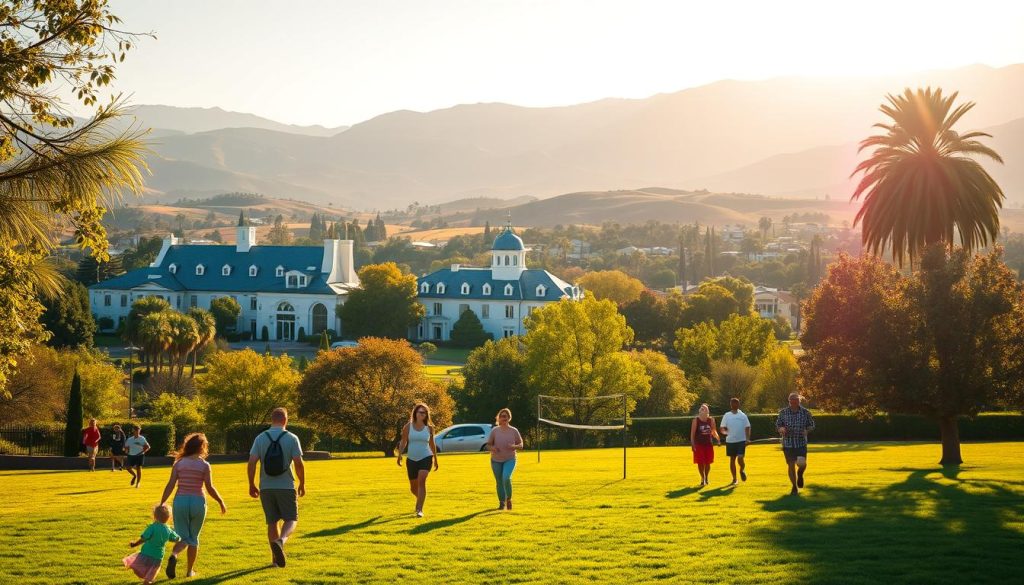
The Adventist Lifestyle and Plant-Based Diet
The Seventh-day Adventist community in Loma Linda emphasizes a plant-based diet, which is rich in fruits, vegetables, and whole grains. This dietary approach is a cornerstone of their lifestyle, contributing to lower rates of chronic diseases. Studies have shown that a diet rich in plant-based foods can significantly reduce the risk of heart disease and certain cancers.
“A diet rich in fruits, vegetables, and whole grains can help reduce the risk of chronic diseases.”
Sabbath Observance and Stress Reduction
Observing the Sabbath is another critical aspect of the Adventist lifestyle. This day of rest is dedicated to spiritual rejuvenation, family, and relaxation, significantly reducing stress levels. By incorporating regular periods of rest, individuals can improve their mental and physical health.
Community Service and Social Connections
The Adventist community in Loma Linda is also known for its strong social connections through community service. Engaging in volunteer work and community activities fosters a sense of belonging and support, which is vital for overall well-being and longevity.
| Key Practices | Benefits |
|---|---|
| Plant-Based Diet | Reduced risk of chronic diseases |
| Sabbath Observance | Stress reduction and spiritual rejuvenation |
| Community Service | Stronger social connections and sense of community |
The combination of a healthy diet, regular rest, and strong community ties in Loma Linda’s Adventist community provides a compelling model for achieving longevity and a high quality of life.
Longevity Lessons from the World’s Healthiest Cultures: Common Threads
Despite geographical differences, the Blue Zones reveal a set of shared lifestyle practices that promote a long and healthy life. As we’ve explored the various Blue Zones around the world, certain commonalities have emerged that contribute to the longevity and well-being of their inhabitants.
Plant-Based Diets with Minimal Processed Foods
A predominantly plant-based diet is a hallmark of all Blue Zones. The emphasis is on consuming a variety of fruits, vegetables, whole grains, and legumes. For instance, the traditional Okinawan diet includes sweet potatoes, seaweed, and soy products, while the Nicoyan diet in Costa Rica features beans, corn, and squash. These diets are not only rich in nutrients but also low in processed foods and added sugars.
Natural Movement Throughout the Day
People in Blue Zones don’t necessarily go to the gym, but they engage in regular physical activity as part of their daily routine. This can include gardening, walking, or other forms of manual labor. The key is that movement is integrated into their lifestyle, not something they do separately.
Strong Social Connections and Community
Having strong social connections is crucial in all Blue Zones. Whether it’s through family, community, or religious affiliations, people in these areas tend to have a strong sense of belonging. This social support network contributes to their mental and emotional well-being.
Stress Management and Life Purpose
Managing stress and having a sense of purpose are also common among Blue Zones inhabitants. Practices such as meditation, taking naps, or simply having a clear sense of direction in life all contribute to reduced stress levels and a longer life expectancy.
| Common Factor | Description | Example |
|---|---|---|
| Plant-Based Diet | Emphasis on fruits, vegetables, whole grains | Okianwan sweet potatoes, Nicoyan beans |
| Natural Movement | Physical activity integrated into daily life | Gardening, walking, manual labor |
| Social Connections | Strong sense of community and belonging | Family gatherings, community events |
| Stress Management | Techniques to reduce stress | Meditation, napping, having a life purpose |
By understanding and incorporating these common threads into our own lives, we can take significant steps towards living longer and healthier lives.
Your 30-Day Longevity Blueprint: Practical Steps
The path to a longer, healthier life is paved with small, consistent changes. By incorporating lessons from the world’s Blue Zones, you can significantly enhance your well-being and increase your lifespan.
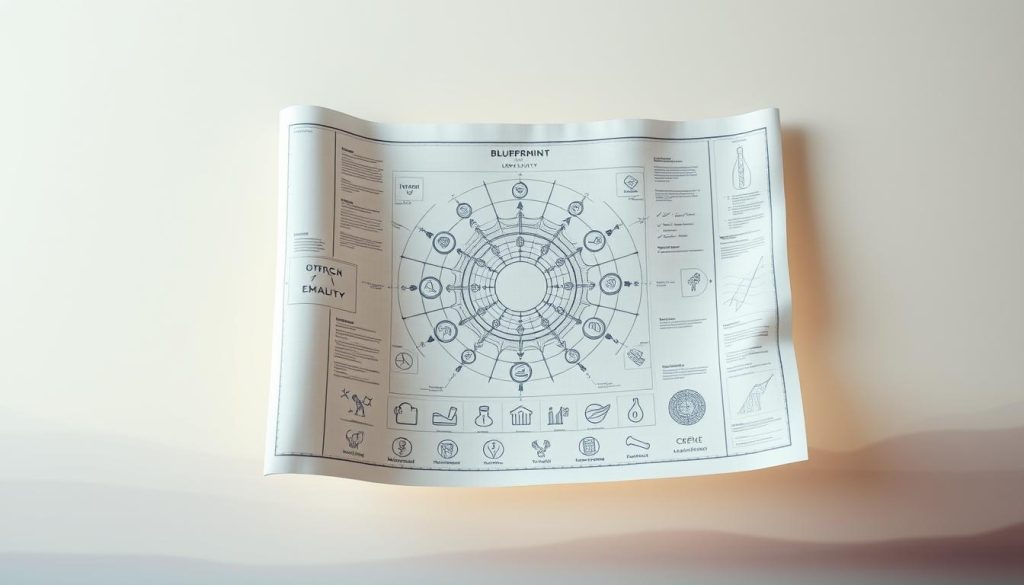
Kitchen Makeover: Blue Zone-Inspired Meal Planning
Start by transforming your kitchen into a hub of healthy eating. Focus on plant-based diets rich in vegetables, beans, and whole grains. A typical Blue Zone-inspired meal plan includes a variety of colorful vegetables, legumes, and whole grains. For example, you can start your day with oatmeal topped with fruits and nuts, have a salad with beans for lunch, and enjoy a vegetable stir-fry with whole grain rice for dinner.
Some key foods to include are leafy greens, sweet potatoes, and avocados. You can also incorporate healthy fats like olive oil and nuts into your meals. Consider meal prepping on weekends to ensure you have healthy options throughout the week.
Movement Rituals: Building Activity Into Your Day
Incorporating physical activity into your daily routine is crucial. This doesn’t mean you need to hit the gym every day. Simple actions like gardening, walking, or even dancing can significantly contribute to your overall health. Aim for at least 30 minutes of moderate physical activity each day.
As Dan Buettner, a Blue Zones researcher, notes, “The world’s longest-lived people don’t pump iron, run marathons, or join gyms; they simply live in environments that constantly encourage them to move without thinking about it.” Create a routine that works for you, such as taking a short walk after meals or doing some light stretching in the morning.
Connection Calendar: Strengthening Your Social Circle
Building and maintaining strong social connections is vital for longevity. Create a connection calendar to ensure you’re regularly engaging with family and friends. This could be as simple as scheduling weekly phone calls, monthly dinners, or participating in community activities.
As
“The people you’re around and the conversations you have matter. Surround yourself with people who are positive, supportive, and who encourage you to be your best self.”
Strengthening your social circle can be as easy as joining a club or volunteering for a cause you care about.
Purpose Practice: Finding Your “Why” in Modern Life
Having a sense of purpose is a common trait among people living in Blue Zones. Take time to reflect on what gives your life meaning. This could be related to your career, a hobby, or your role within your family and community.
To find your “why,” start by journaling or meditating on your values and passions. Ask yourself questions like “What activities make me feel most alive?” or “What do I stand for?” Having a clear sense of purpose can significantly enhance your mental and physical health.
Conclusion: Living Longer and Better
Embracing the secrets to a longer and healthier life is within reach. By learning from the world’s healthiest cultures, we can adopt sustainable lifestyle changes that promote living longer and better living. The key is to focus on gradual, achievable adjustments rather than quick fixes.
The lessons from the Blue Zones offer a roadmap to longevity. By incorporating plant-based diets, natural movement, strong social connections, and stress management into our daily lives, we can significantly enhance our overall well-being. It’s about creating a lifestyle that supports a long and healthy life.
As we move forward, remember that every small change counts. Start with one or two changes that resonate with you, and build from there. With persistence and dedication, you can embark on a journey towards a longer, healthier, and more fulfilling life.

